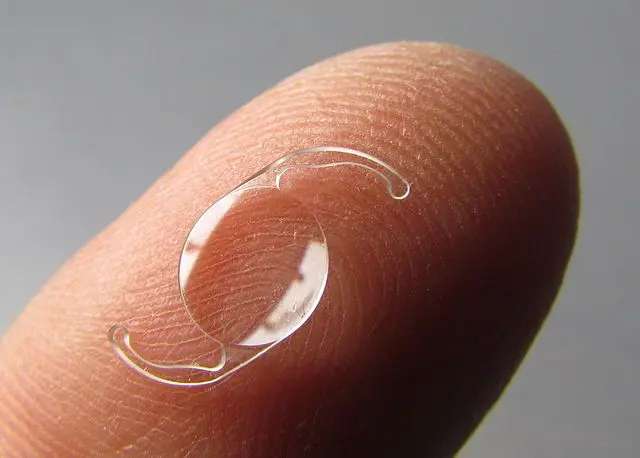Prolonged exposure to sun, wind, and dust can affect eye health, leading to conditions that cause discomfort and visual disturbances. One such condition is pterygium, commonly known as Surfer’s Eye. This growth on the eye’s surface can cause redness, irritation, and in severe cases, blurred vision. When it starts affecting daily life, surfer's eye removal becomes a necessary solution.
For individuals seeking long-term clarity, vision correction surgery is another option that can address refractive errors like nearsightedness, farsightedness, and astigmatism. Both procedures focus on improving eye health and ensuring better vision.
This blog explores what surfer's eye removal entails, how it benefits patients, and the role of vision correction surgery in achieving optimal eyesight.
Understanding Surfer’s Eye

Surfer’s Eye, or pterygium, is a non-cancerous growth of tissue that extends from the conjunctiva (the white part of the eye) toward the cornea. It often occurs due to prolonged exposure to UV rays, wind, and dry environments, making it common among outdoor enthusiasts.
Causes of Surfer’s Eye
Several factors contribute to the development of this condition, including:
UV Radiation: Excessive sun exposure is a leading cause of pterygium.
Dry and Windy Conditions: Dry air and dust can irritate the eye, leading to growth formation.
Frequent Eye Irritation: Constant exposure to allergens, sand, or saltwater can increase the risk.
Symptoms of Surfer’s Eye
Symptoms can vary in severity but often include:
- A visible, fleshy growth on the eye
- Redness and inflammation
- Itchiness or a gritty sensation
- Dryness and discomfort
- Blurred vision in advanced cases
If left untreated, pterygium can grow over the cornea, leading to permanent vision impairment. This is where surfer's eye removal becomes essential.
Surfer's Eye Removal: Procedure and Benefits

Surfer's eye removal is a minor surgical procedure designed to eliminate the abnormal tissue and restore a clear visual field. While lubricating eye drops and anti-inflammatory medications can help manage mild cases, surgery is required when the growth obstructs vision or causes discomfort.
The Surfer’s Eye Removal Procedure
The procedure is typically performed on an outpatient basis, allowing patients to return home the same day. The steps include:
Anesthetic Application: Local anesthesia is administered to numb the eye, ensuring a pain-free experience.
Tissue Removal: The pterygium is carefully excised, preventing further encroachment onto the cornea.
Tissue Grafting: To reduce the risk of regrowth, a small piece of conjunctival tissue (from the patient’s eye) is placed over the affected area. This graft is secured using sutures or medical-grade glue.
Post-Surgical Care: The eye is covered with a protective shield, and patients are prescribed eye drops to support healing.
Recovery After Surfer’s Eye Removal
Recovery typically takes a few weeks, during which patients may experience mild discomfort, redness, or a foreign body sensation. To promote healing, doctors recommend:
- Using prescribed eye drops regularly
- Wearing sunglasses to protect against UV rays
- Avoiding rubbing or touching the eye
- Refraining from activities that expose the eyes to dust and wind
By following these guidelines, patients can reduce the chances of pterygium regrowth and maintain eye health.
Vision Correction Surgery: Improving Eye Health Beyond Pterygium Removal
While surfer's eye removal focuses on eliminating abnormal tissue growth, vision correction surgery is designed to improve eyesight by correcting refractive errors. Many individuals suffering from conditions like myopia, hyperopia, and astigmatism seek surgical options to reduce or eliminate their dependence on glasses and contact lenses.
Types of Vision Correction Surgery
- LASIK (Laser-Assisted In Situ Keratomileusis)
- Uses a laser to reshape the cornea, improving how light enters the eye.
- Quick recovery with minimal discomfort.
- Suitable for patients with mild to moderate refractive errors.
- PRK (Photorefractive Keratectomy)
- Removes the outer layer of the cornea before reshaping it with a laser.
- Recommended for individuals with thin corneas.
- ICL (Implantable Collamer Lenses)
- A permanent lens is implanted inside the eye to correct vision.
- Suitable for those who are not candidates for LASIK.
- SMILE (Small Incision Lenticule Extraction)
- Minimally invasive laser procedure that corrects vision with a small incision.
- Provides quick healing with fewer complications.
How Vision Correction Surgery Benefits Patients
- Reduces Dependence on Glasses and Contacts: Most patients experience a significant improvement in vision clarity.
- Long-Term Results: Once the cornea is reshaped, vision correction is typically permanent.
- Minimal Recovery Time: Most procedures allow patients to resume normal activities within a few days.
Preventing Eye Conditions with Proper Care
While surgery is an effective solution, preventing eye conditions is always the best approach. Here are some tips to maintain eye health:
Preventing Surfer’s Eye
- Wear sunglasses with UV protection when outdoors.
- Use lubricating eye drops in dry environments.
- Avoid excessive exposure to wind, dust, and smoke.
Maintaining Good Vision
- Follow the 20-20-20 rule (look away from screens every 20 minutes for 20 seconds).
- Get regular eye check-ups.
- Maintain a healthy diet rich in vitamin A and omega-3 fatty acids.
Taking these precautions can help prevent the need for surfer's eye removal or vision correction surgery in the future.
Conclusion
Both surfer's eye removal and vision correction surgery offer significant benefits for those struggling with eye conditions. While surfer's eye removal is essential for eliminating pterygium and preventing vision obstruction, vision correction surgery provides long-term clarity by addressing refractive errors.
If you are experiencing persistent eye irritation, abnormal growths, or vision difficulties, seeking professional guidance is the best way to restore and maintain optimal eye health. Schedule an appointment at Clear View Eyes for expert consultation and personalized treatment options tailored to your needs.



